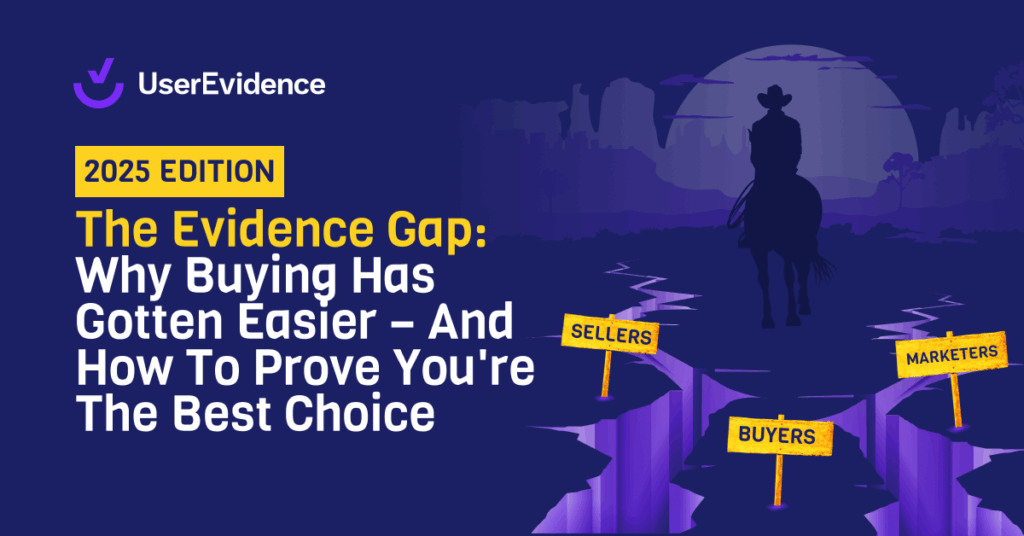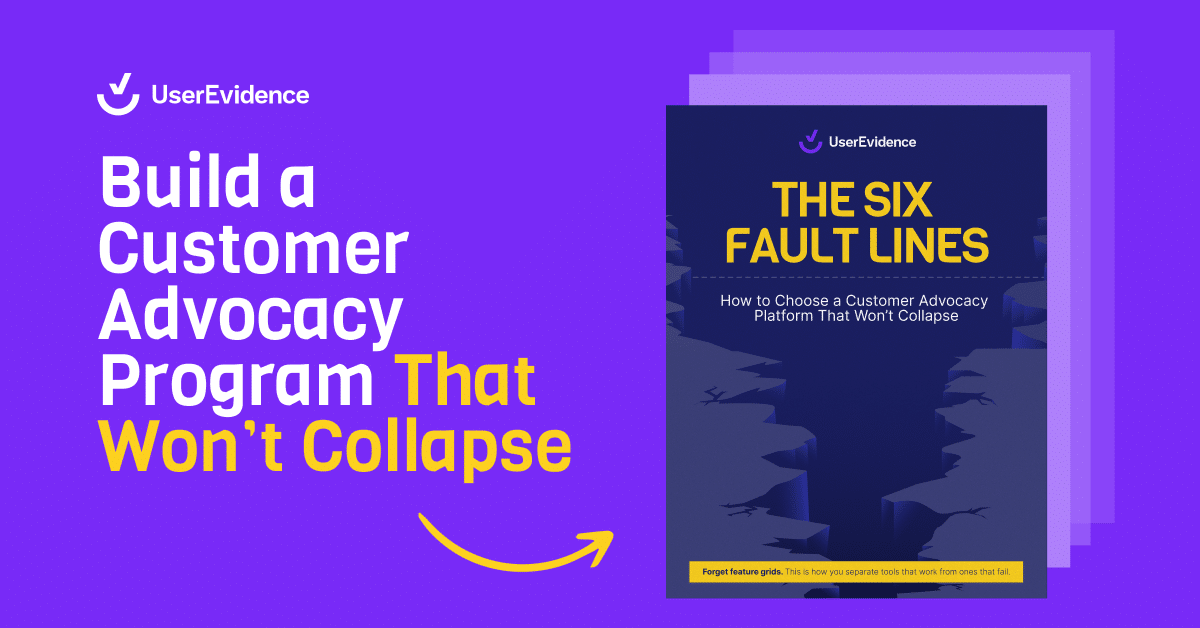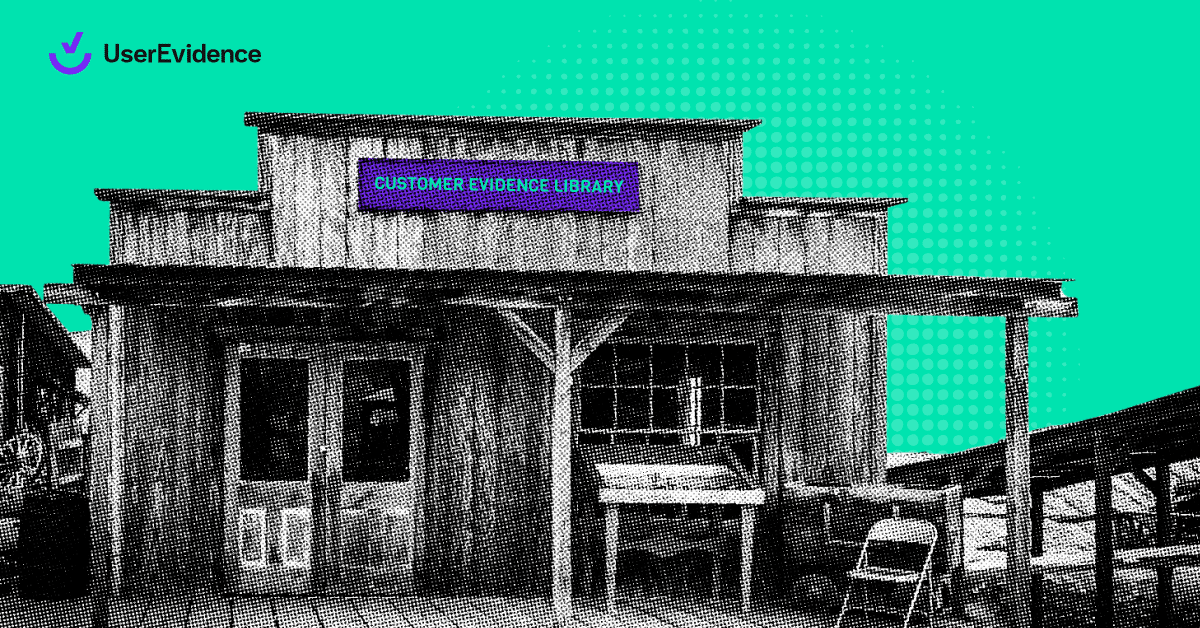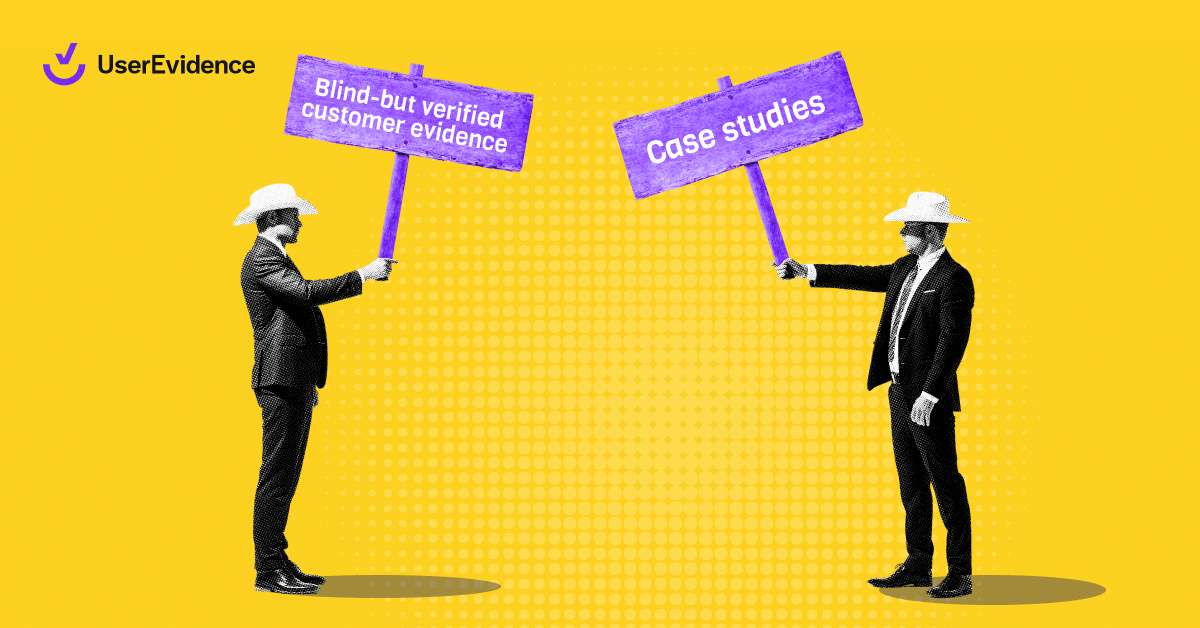B2B buyers are making decisions differently. They are no longer persuaded by vendor promises or polished campaigns. They trust what other customers say, and they have endless ways to find out.
In this year’s Evidence Gap Report, more than 70% of buyers said peer evidence is more credible than brand messaging. That shift has major implications for every go-to-market team. The future of growth will belong to companies that make customer proof a core part of their GTM system, not a side project managed by marketing.
Static case studies cannot keep up
Traditional case studies take months to produce and often lose relevance before they are even published. They tell a single story, from one customer, at one point in time. In a market that moves this fast, that approach simply cannot keep up.
Buyers expect credible, verifiable proof that shows how products perform in the real world. They do not want anecdotes. They want evidence. And the only way to deliver it at scale is by building an advocacy system that continuously captures, organizes, and activates customer outcomes across the entire funnel.
Teams that still rely on big, one-off stories often miss key proof moments during a deal. If your case study cycle takes three to six months, a large opportunity might come and go while you wait for approvals. Capturing specific examples of impact the moment they happen prevents that lag.
Advocacy should operate as a system
The most effective companies treat advocacy like a supply chain that runs continuously.
- Capture continuously. Collect insights at key inflection points such as launches, renewals, expansions, or NPS responses.
- Organize for access. Tag and structure every quote, KPI, and clip so it is searchable and easy to reuse.
- Activate everywhere. Deliver proof inside the tools and moments where buyers are making decisions such as sales decks, campaigns, pricing pages, and outbound.
When advocacy operates this way, it stops being a content exercise and becomes an always-on engine for credibility and revenue.
How to capture proof continuously
High-performing teams capture outcomes the moment they happen. They do not wait for a formal interview or a video shoot.
Short surveys, in-product prompts, or automated KPI requests can capture authentic proof in minutes. The key is speed and consistency. Advocacy programs that collect fresh data every week, not every quarter, build a real advantage in how quickly they can deliver relevant, validated outcomes to sellers.
Legal and compliance approvals can still slow things down. Even if a logo clause makes it into the MSA, the person who signs is rarely the one who approves a story. The best teams avoid that bottleneck by collecting smaller, verified snippets and metrics continuously instead of waiting for a single polished case study.
How to structure proof for access
Customer proof is only valuable if it can be found when it is needed.
The strongest programs build structured taxonomies by tagging every piece of evidence by product, use case, segment, and competitor so teams can instantly surface relevant proof.
Examples of effective formats include:
- Short quotes with company and context
- KPI tiles such as “Reduced onboarding time by 40%”
- Competitive head-to-heads that show clear differentiation
- 30 to 60 second clips highlighting real results
Specificity builds confidence. When a seller can surface the right proof in seconds, it accelerates trust and moves deals faster.
One test to try: on your “Schedule a demo” page, create three versions. The first uses only a logo wall. The second adds a generic quote. The third adds a contextual quote matched to the visitor’s industry or use case through ABM. The third almost always wins. Relevance is the conversion unlock.
How to activate proof across GTM
Evidence drives results when it shows up where decisions happen.
Proof should be embedded throughout your GTM stack including pricing and demo pages, email nurtures, sales enablement tools, and CRM snippets. It should appear automatically in workflows your teams already use, not in a separate portal they have to remember to check.
Sales and marketing alignment is key here. Marketing earns the right to ask for advocate introductions only after showing it can drive velocity. Start by ingesting existing proof from reviews, case studies, and testimonials, then organize it so sales can find it instantly. Once you show value, sellers will gladly help source more advocates.
When proof lives where selling happens, it becomes part of the buying experience itself. It helps buyers feel confident in their choice and helps sellers close deals faster.
Who is setting the new standard
Gong and Bill.com both demonstrate what modern advocacy looks like.
Gong treats customer voice like a product by capturing and repackaging proof in multiple formats that flow into every part of their funnel. Bill.com embeds customer stories and outcomes directly into its buying experience, creating a journey that is rich with proof at every step.
These companies are not chasing one hero story. They are running systems that make evidence easy to find, trust, and act on.
How to measure advocacy impact
Advocacy done right drives measurable results across the funnel.
Direct impact
- Revenue influenced or sourced from advocates
- Win rate lift when reference calls or proof are used
- Conversion increases when contextual proof is embedded
Indirect impact
- Faster deal cycles driven by reduced buyer risk
- Higher trust and sales velocity
- Stronger alignment between marketing and sales
It is not about a perfect percentage. It is about combining tangible wins with anecdotal feedback that gets teams invested.
Building the next era of customer advocacy
Customer advocacy is evolving from a marketing tactic to a GTM system that drives lifecycle revenue.
Proof will no longer stop at acquisition. It will shape onboarding, feature adoption, expansion, and renewal. Teams that can continuously capture, structure, and activate credible proof will move faster and sell with more trust. The ones that cannot will fall behind.
At UserEvidence, we are building the infrastructure to make this shift possible. Our platform helps B2B companies operationalize customer proof so every buyer conversation starts and ends with evidence they can trust.
_________________________________________________________________________________________
In 2026, the most effective PMM teams won’t be the ones with the prettiest PDFs. They’ll be the ones who can answer any real buyer question, on demand, with customer-verified proof.Stop chasing formats. Start shipping answers. Check out The 2025 Evidence Gap Report to understand how you can rethink customer evidence to win more deals in 2026.




